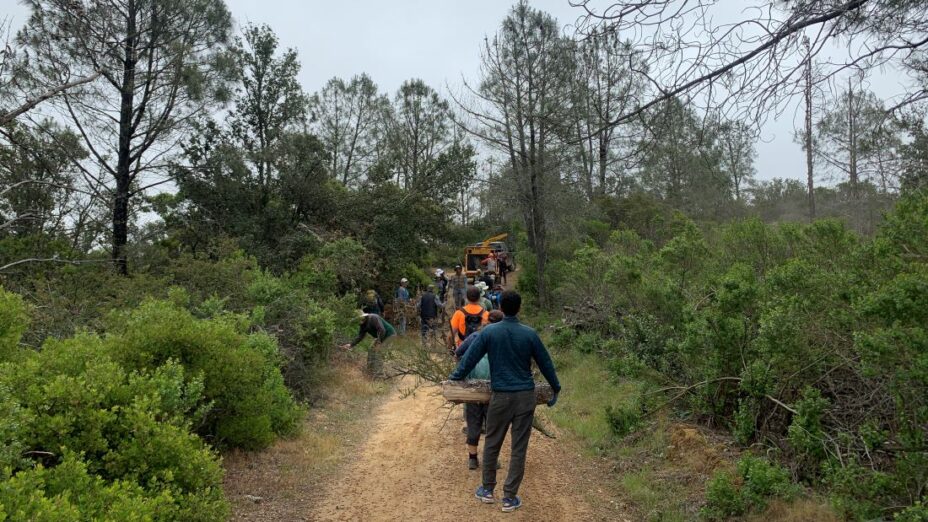
In 2021, we noticed an unusual event on Mount Diablo, in the wild and biodiverse Knobcone Point area. Huge swaths of knobcone pine trees, Contra Costa manzanitas, and Mount Diablo manzanitas were dying.
Those who visited the area observed piles of dead plant debris.
Knobcone pines have a fairly short lifespan (they live 75 to 100 years maximum, and it’s normal for many to die before they reach that age). So we knew that age was part of the puzzle, but not all.
Though all the causes of the dieback were difficult to initially determine, the potential effects could be severe if the dead trees and chaparral shrubs weren’t removed. The dieback could potentially stifle new plant growth, worsen wildfires, and encourage the growth of invasive species.
So, we got to work and started to do something about it.
Volunteers at Work!
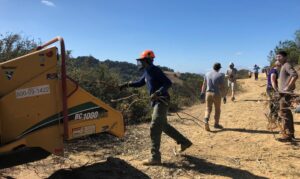
Photo by Roxana Lucero
Last year, in September, we hosted our first Knobcone Point Adopt-a-Crag event in which volunteers cleared piles of dead vegetation from the road.
This event was generously sponsored by a grant from the American Alpine Club. With this grant, we’re planning another restoration event at Knobcone Point later this summer.
Previous Adopt-a-Crag events have focused on taking motivated volunteers out to help with major projects such as removing graffiti and glass shards from Castle Rock.
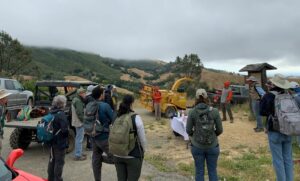
Our most recent Adopt-a-Crag event at Knobcone Point. Photo by Haley Sutton
This time the volunteers worked to remove dry dead biomass that could potentially fuel hazardous wildfires and otherwise detract from the ecological health of the area.
Our most recent Adopt-a-Crag event was held on May 26, in partnership with the American Alpine Club, the Bay Area Climbers Coalition, Mount Diablo State Park, and CAL FIRE.
Volunteers, California State Parks staff, and Save Mount Diablo staff collected dead plant matter and put it into a woodchipper.
Removing this dead matter gives new native trees and plants the opportunity to grow. During spring, our team saw a huge variety of colorful wildflowers throughout the area as they worked to steward the land.
It was thanks to everyone’s hard work that we were able to proudly open the new Knobcone Point trail connection earlier this year.
This trail stretches through the upper 560 acres of Curry Canyon Ranch, connecting Knobcone Point to Riggs Canyon and opening up an area that was closed to the public for nearly 100 years.
To prepare for the grand opening of the trail connection, we also installed informational signage, access gates, and other infrastructure in addition to the removal of the dead plant matter from the dieback.
What Caused the Dieback?
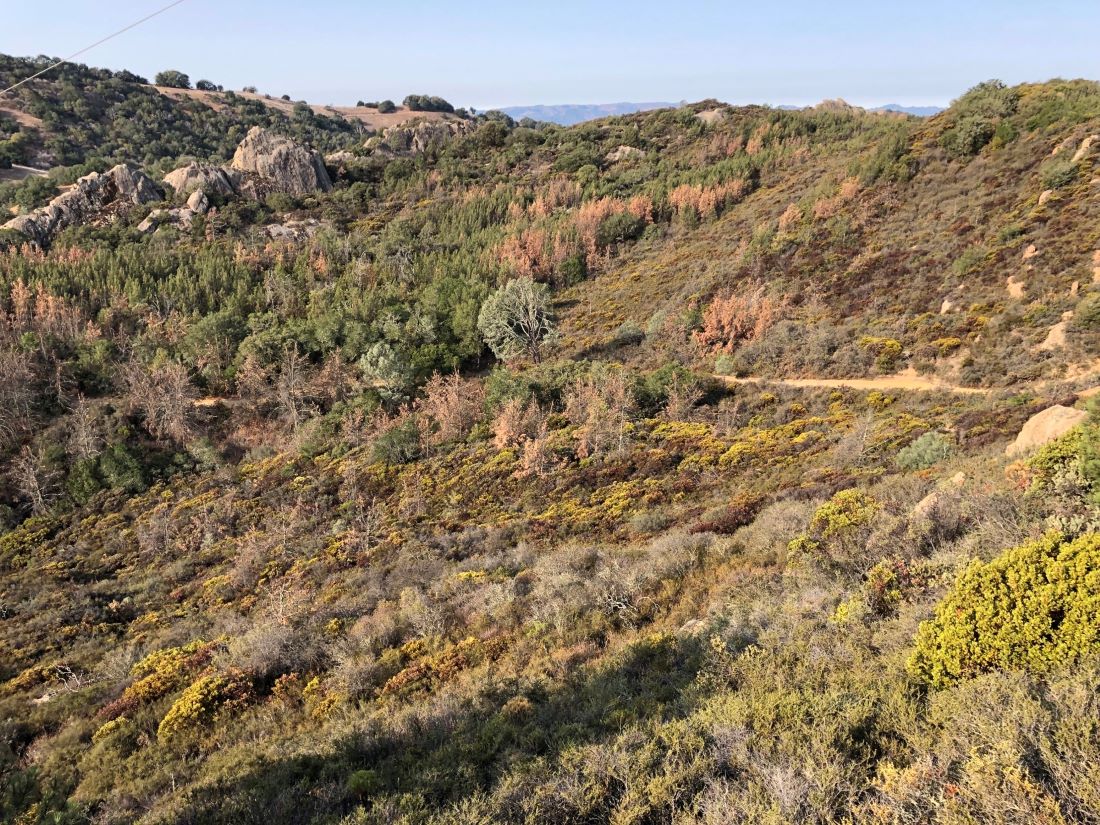
The dieback. Photo by Sean Burke
All this volunteer work has been one part of the response to the major dieback on this area that started several years ago. The other part is helping to determine and understand the cause of the dieback.
With funding from the East Contra Costa County Habitat Conservancy, we were able to facilitate research on this major dieback.
Before we did anything in the area, we closed it off completely to people until after the study was completed by Phytosphere Research, because we were concerned about introduced pathogens that are typically found along roads.
If we had found any introduced pathogens, it would have been hard to open the trail to the public in good faith as we did.
Once we received the results, which cleared the area from any non-native pathogens acting as a known cause, we were then able to begin management.
The researchers we worked with found several factors contributing to the dieback. In 2022, the results were presented by plant pathologist Dr. Tedmund Swiecki at our Mary Bowerman Science and Research colloquium.
In the years before the dieback, Mount Diablo was particularly affected by drought, with an increasing water deficit. The drought left plants more vulnerable to events like the record-breaking heatwaves of 2020.
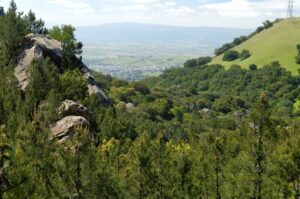
Knobcone Point area before the dieback. Photo by Scott Hein
These heatwaves are what likely exacerbated the dieback; the heat left the trees and other plants with scorch, meaning that the tops were practically burnt off.
The impact was worsened because the Knobcone Point area lies on top of sandstone, with just a thin soil layer.
The dieback was prolonged because a bark beetle, the California fivespined ips, moved into this stressed area in the wake of the initial dieback. This bark beetle infests and kills pine trees and makes its home in fresh plant debris.
Removing the excess biomass along the road will help us minimize colony habitat for bark beetles and help prevent similar diebacks from happening in the future.
We are not removing all biomass, because it is habitat for many federally endangered species known to be in the area.
Thank you to the volunteers, researchers, and staff who helped us to understand, restore, and enjoy Mount Diablo’s Knobcone Point after this major dieback!
We’ll be continuing to remove more dead biomass along the road and steward this land so that Mount Diablo can thrive and visitors can continue to enjoy the beauty of its landscapes.
We are also working on a plan with California State Parks that hopefully will lead to a prescribed burn of the area. The native plants here are adapted to fire.
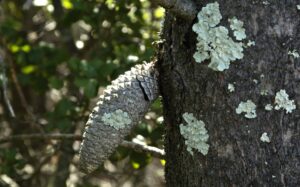
Knobcone pine. Photo by Scott Hein

